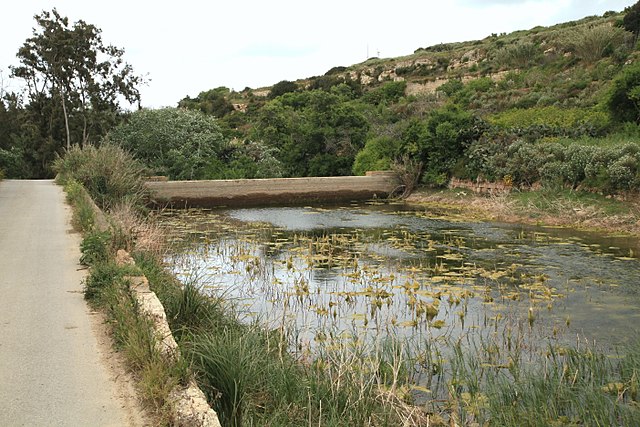| Malta Short Let: Cozy Stay in Gzira | |
|
Sliema Area Modern Designer Finished 2 Bedrooms + Games Room. First floor with Maltese Balcony Large back Terrace with swinging sofa Fully Airconditioned + Full Kitchen 3 TVs, including 65” with backlight. |
 |
|
Book Now: Google Travel | Direct (Cheapest) | Booking.com | Airbnb |
|
Introduction: Malta’s Hidden Water Wonders
Malta—a sun-soaked gem in the heart of the Mediterranean—is an island full of surprises. Imagine visiting a place with no rivers or lakes, scarce rainfall, yet a vibrant culture that has thrived for millennia. How did the Maltese people pull off this magic trick? How did they find enough water to drink, let alone flourish? Let’s embark on a journey through Malta’s remarkable water history, a story as captivating as the island itself.
Ancient Water Sources and Ingenious Solutions
When the first settlers arrived in Malta, they faced a daunting challenge: an arid land with minimal natural water sources. But necessity is the mother of invention. Utilizing the island’s abundant limestone, they carved out cisterns to collect and store rainwater. Visiting the ancient Megalithic Temples of Malta, you can still see these cisterns today—a testament to human ingenuity. It’s like stepping into a time machine where Stone Age solutions meet modern curiosity.
Beneath the surface, Malta holds another secret. Two main types of groundwater aquifers—perched and sea-level—provided vital water supplies. The perched aquifers, located in the western highlands, were easier to access but limited in volume. The deeper sea-level aquifers required more effort to tap into but offered greater reserves. Think of it as Malta’s own version of a treasure hunt, but instead of gold, the prize was life-sustaining water.
Arab Contributions and Medieval Water Wisdom
Fast forward to around 870 AD, when Arab rulers introduced advanced water management techniques. They strategically established villages near natural springs and wells. Even today, place names like “Bir” (well) and “Ghajn” (spring) pepper the island, echoing this legacy. Farmers dug vertical shafts called ‘spiera’ and used ‘sienja’—animal-driven water wheels—to lift water. It’s like the medieval equivalent of a DIY project, but instead of building a birdhouse, they were crafting survival systems.
To dive deeper into this fascinating period, consider taking a self-guided tour in Malta that highlights these historical sites. It’s a journey that not only educates but also immerses you in the island’s rich tapestry of cultures.
The Knights of St. John and the First Aqueducts
When the Knights of St. John established Valletta in the 16th century, they knew water was worth its weight in gold—literally. They mandated that every house must have a well, and gardens were prohibited to conserve water. They built impressive aqueducts in the 1600s to channel water to Valletta and neighboring towns. Walking alongside these ancient stone structures, you can almost hear the whispers of knights and townsfolk who relied on this lifeline.
For a modern twist on exploring Valletta, stay at our charming Airbnb in Gzira. Located just a stone’s throw from the capital, it offers the perfect base to explore historical sites while enjoying contemporary comforts.
The British Era and Modern Innovation
The 19th century brought British rule and new technological advancements. With the population booming, the British introduced motorized pumps in 1851 and built reservoirs and pipelines. By 1881, Malta had its first seawater distillation plant—a groundbreaking step in securing fresh water.
Today, Malta relies heavily on reverse osmosis technology to convert seawater into drinking water. Imagine turning the vast Mediterranean Sea into your personal reservoir—that’s the genius of reverse osmosis. At one point, Malta even boasted the world’s largest reverse osmosis plant, highlighting the island’s commitment to innovative solutions.
Modern Water Management and Tourist Experiences
In contemporary Malta, water conservation remains paramount. Grey water systems are increasingly common, recycling water from sinks and showers for non-drinking purposes. Staying in an eco-friendly accommodation not only supports these efforts but also enriches your travel experience.
Why not book our eco-conscious Airbnb in Sliema? Nestled in one of Malta’s most vibrant areas, it’s the ideal spot to relax after a day of exploring water-related sites. Plus, you’ll be supporting sustainable practices that make a real difference.
Exploring Malta’s Water Wonders
For nature enthusiasts, Chadwick Lakes is a must-visit. Especially vibrant in winter, this series of dams creates one of the rare freshwater ecosystems on the island. Stroll along the scenic trails, and you might spot the qabru, Malta’s native freshwater crab—a delightful encounter with local wildlife.
Don’t miss Ghajn tal-Hasselien, an ancient spring that once quenched the thirst of entire communities. Standing there, you can almost feel the passage of time, connecting you to generations who revered this vital resource.
Over in Gozo, San Raflu Lake , a little natural lake in Gozo offers a tranquil escape. It’s perfect for a leisurely afternoon, perhaps with a picnic and a good book. Nearby, adventurous souls can explore an open borehole, possibly hidden within a cave. It’s like uncovering one of Malta’s many secrets—an experience that adds a dash of mystery to your trip.
For foodies, understanding Malta’s water history adds flavor to the culinary scene. Local dishes often feature ingredients grown using ancient irrigation methods. Dive into the gastronomic delights by checking out the best food in Malta, and taste the history for yourself.
Self-Guided Water History Tour
To truly immerse yourself, embark on a self-guided water tour of Malta. This carefully curated journey takes you through the most significant sites related to Malta’s water history. From ancient cisterns to modern marvels, it’s an adventure that quenches both thirst and curiosity.
Making the Most of Your Visit
Understanding Malta’s water story enhances your travel experience in unexpected ways. It’s not just about seeing the sights; it’s about connecting with the soul of the island. Be mindful of your water use—take shorter showers, turn off taps when not in use, and appreciate the preciousness of each drop.
For families traveling with kids, these educational experiences can be both fun and enlightening. Check out the best things to do in Malta with kids for more ideas on how to keep the little ones engaged.
Conclusion: Your Maltese Adventure Awaits
So, as you plan your trip to Malta, remember that every part of the island tells a story—including the water you drink. Whether you’re staying at our inviting Airbnb in Sliema or our cozy Airbnb in Gzira, you’ll be perfectly positioned to explore Malta’s hidden water wonders.
Ready to uncover more secrets? Discover why Malta is one of the best European destinations for 2025. From its ancient history to modern-day marvels, Malta offers an unforgettable experience that’s just waiting for you to dive in.
Photo Credit : Frank Vincentz








